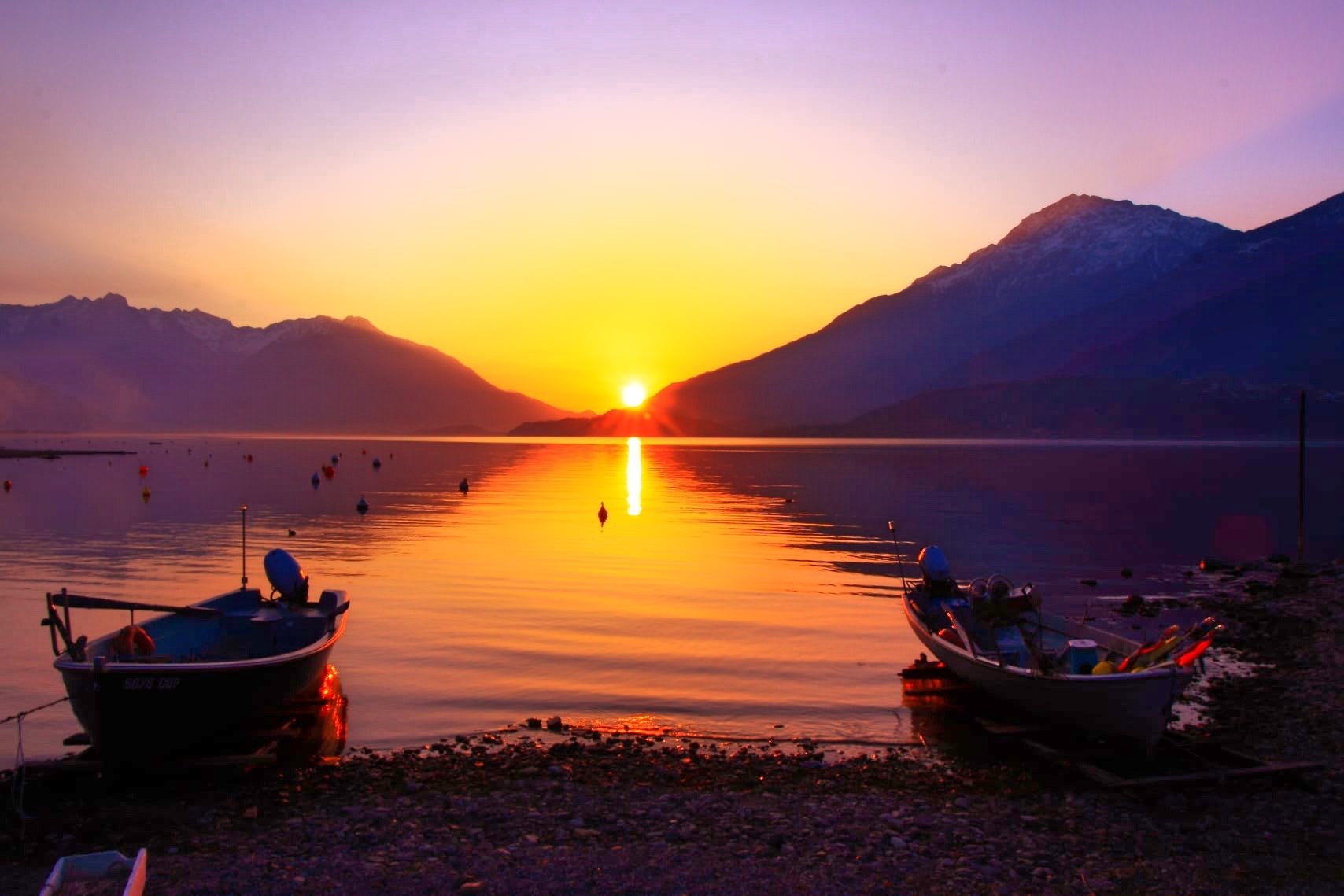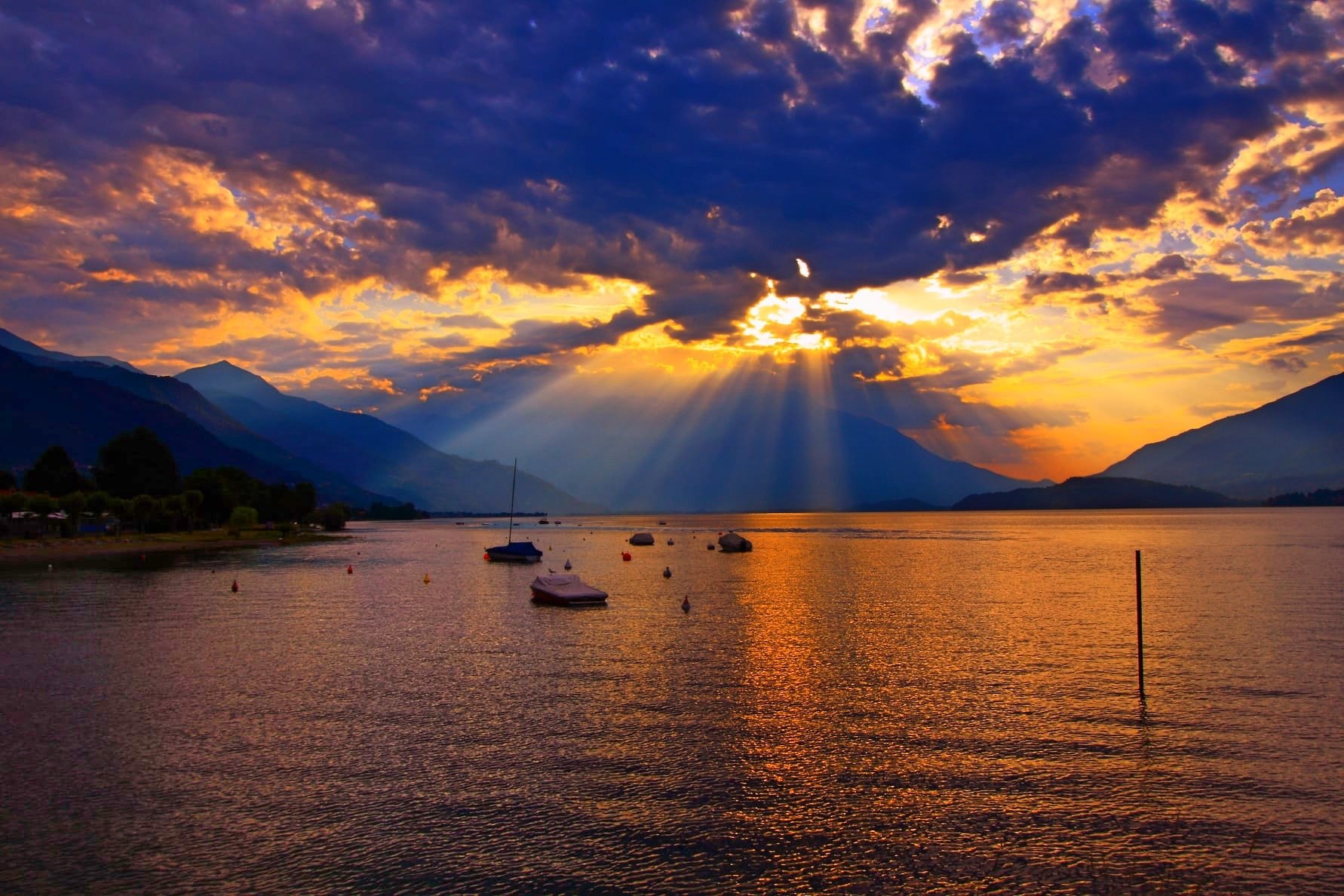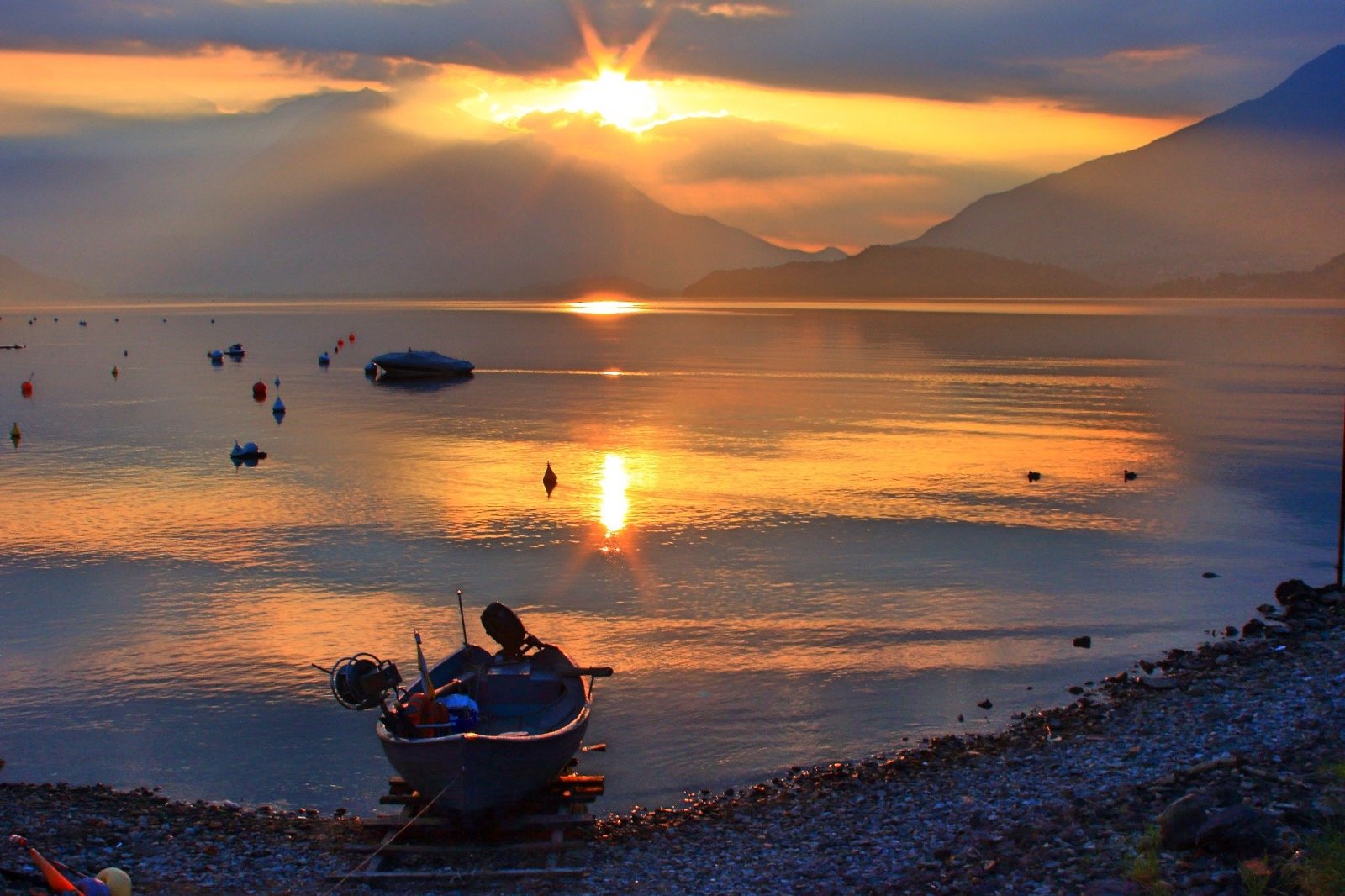Dongo, Lake Como: What to See in This Charming Village Which Took Part to Modern History [Infographic]
Pic by North Lake Como
It’s probably less known internationally compared to its more famous neighbors (Menaggio and Tremezzina to the forefront), but Dongo, on the northern coast of Lake Como, boasts in our view a truly authentic beauty that definitely deserves to be known.
Dongo extends between the rocky spur called "Sasso di Musso”, towards the mouth of the Albano stream, up to the mountain hamlet called Bersaglio. Behind the town, beyond its numerous hamlets, you’ll see the magnificent Valle Albano (famous for the Resistance memories) with the villages of Stazzona, Germasino (part of the municipality of Gravedona and Uniti) and Garzeno.
Valle Albano - pic by Beppe Galbiati
The historic core of the town winds along the narrow streets that lead to the ancient hamlets of Martinico and Barbignano, even if the rapid economic development of the post-war period led to a considerable building expansion towards Consiglio di Rumo plain (Gravedona and Uniti), beyond the Albano stream that divides the town and flows into the lake near the port of the former Falck foundries.
Today, Dongo is a dynamic and promising tourist resort where there are quiet lakeside campsites, ice cream parlors, restaurants, sports facilities and many sailing centers. But there’s a lot to know about the past of this village… ready for a jump into its roots?
The origins and the role in Modern History
A village of Roman origins, Dongo was one of the oldest parish churches in the Como region. Combined administratively with Gravedona and Sorico, Dongo constituted the County of the Three Pievi that knew how to oppose the armies of Barbarossa.
Most interestingly, you have to remember that Dongo played a crucial role in Modern History: it was here indeed that on the morning of April 27, 1945, the column of fascist hierarchs fleeing towards Valtellina was stopped by the Dongo partisans (52° Brigata Garibaldi). The column was composed of about thirty cars, Pavolini's armored car and the escort of retreating German soldiers and vehicles.
The priest and the fascist hierarchs in Dongo after the capture
Many fascist hierarchs were shot on the Dongo lakeside that same day (you can still see today the signs of the shots in the iron balaustrade); Mussolini was then killed on April 28, 1945 in Giulino di Mezzegra.
Today, in Piazza Giulio Paracchini, the Museum of the End of the War preserves the great heritage of memories about the partisans Resistance against the Nazi-fascist regime: it keeps a truly precious collection of relics, photographs, historical documents and didactic panels relating to the partisan struggle at Lake Como, with particular attention to the events that took place in the area of Dongo.
Details of the exhibition
As declared on its website, this special Museum intends “to restore color and voice to the faded memories of the Liberation” through modern interactive technologies and a language that also speaks to the new generations.”
The museum also wants to be a place of meditation, in memory of those young people who sacrificed their lives to give freedom and peace to future generations.
Where: Palazzo Manzi, Piazza Paracchini 6
What to see in Dongo
Palazzo Manzi, a rare example of neoclassical style in Northern Lake Como, is the municipal seat of Dongo, but it was built for a local noble family in 1803. In 1937 it was bequeathed by the last descendant, Giuseppina Manzi, to the Donghese community, to be used as a municipal seat. Inside there are very suggestive rooms, like the famous Sala d’Oro (once the hall of honor, where the noble owners organized balls and receptions) and the ancient Library, with its 4000 precious volumes. The interrogation of Mussolini took place in the rooms on the ground floor of Palazzo Manzi. The hierarchs stopped in Musso before their execution were locked up in the Sala d’Oro; in that same hall, the funeral chamber for the last dead of the Dongo Resistance was set up.
The Church of Santa Maria in Martinico deserves a visit, too. Built around 1100, the church underwent an extensive renovation in the early 1900s. The wall structure of the side is interesting, interrupted by a beautiful side portal with columns and sculptures in precious Musso marble (the church is usually open and can be visited, Masses on Sundays at h. 8.00).
Another must-visit is the Sanctuary of Our Lady of Tears, in Via delle Rimembranze 8. It was built starting from 1500, following a miraculous event, and was subsequently annexed to the Franciscan Convent. The church has a 17th century appearance and houses interesting paintings and frescoes in the side chapels made by friars-artists of the Franciscan order. Attached to the sanctuary is the convent of the Franciscan friars, inside which there are splendid frescoes that tell the life of St. Francis. The building consists of two cloisters, with the private quarters of the friars, the refectory, the chapter house and the stunning library (open to visits only on Wednesdays) with precious incunabula and manuscripts. The church is open and can be visited (for ingo: dongo@fratiminori.it).
Finally, to complete your tour of religious buildings in Dongo, you have to stop at the Parish Church of Santo Stefano, by the beach: it was one of the first churches in the diocese of Como!
S. Stefano Church - pic by Beppe Galbiati
In the 1700s, this church was invaded by the waters of the lake following a flood, and for this reason it was entirely rebuilt in Baroque style at a higher level than the shore.
Inside you can admire numerous frescoes made by valid artists of European fame, like Carlo Scotti and Giulio Quaglio from Laino Intelvi. The church is usually closed except during the masses on Saturday at 6 pm and on Sundays at 10.30 am.
The beach in Dongo, with S. Stefano on the background. Image via Ecco Lecco
Dongo is also… Falck: the tradition of ironworks
Since the 15th century, the main economic resource was the exploitation of iron deposits in Valle Dogana, with the construction of blast furnaces and buildings to melt and work the metal. During the 19th century, the metallurgical company of the Rubini was born and developed in the twentieth century with the Falck family, becoming the most important economic resource of the Northern Lake.
Large public beaches… and the most breathtaking view on the sunrise on the lake!
Together with Gravedona and Gera Lario, Dongo offers one of the most beautiful and largest public beaches of the western bank of Lake Como, where you’ll find plenty of lively campings and picnic areas near the coast.
There’s also a looong lakeside promenade that starts right in Dongo and leads to Musso: perfect for a stroll with your dog, your baby or, if you’re a sporty person… for jogging with a view!
Along the path you’ll find Borde Beach, a nice kiosk on the beach where relaxing after sunbathing. They also have free attractions for children, w.c. services, and free shower.
Dongo promenade, picnic areas - Pic by Beppe Galbiati
Impossible not to mention the incredible sunrise you can enjoy from the beach in Dongo, especially from the so called “fishermen bay”, right in front of Santo Stefano church: thanks to the lucky orientation of this village, you’ll see the sun clearly rising from the mountains and immediately painting the whole lake of a fabulous golden orangish hue! Check out the gallery below, with all the pics by Beppe Galbiati, a local photographer.
Pasticceria Galli for breakfast, Albergo Dongo for a special pizza, Gaia Bistrot for happy hours
When it comes to eateries, we can’t help by mentioning Albergo Dongo for the special pizza with tagliata di manzo and fries on it!
Try also the famous Pasticceria Galli for a delicious breakfast. Galli also offers a large selection of local craft beers and other special local products.
Gaia Bistrot, next to the pharmacy, is also a cool spot for having an aperitivo.
Where buying 100% local products in Dongo
Two spots to bear in mind for buying local products:
Da Zazà: a tiny mini market (where they speak German, French and English, btw) offering typical local products like the famous Semuda, Braschino from Garzeno and local salami.
Latteria Sociale: a real paradise with a strong scent of cheeses, a vast showcase of cold cuts from all over the Lario, Valtellina and Valchiavenna regions. You can also find flours, fruit, pastries, jams, honeys, cakes and biscuits, local oil from olive groves in Musso, Alto Lario and Tremezzina, wines, liqueurs and grappas, plus a careful selection of local specialties from farms at km 0.
Fishmonger in Via Cossoni, next to S. Stefano church
© Lakeside
A nostalgic toy shop where time has stopped
If you like the nostalgic vibe of the ancient toy shops, you have to stop by Cartolibreria Meloni in Via Tre Pievi 7, Dongo: one of the oldest surviving game stores over the years, run by a truly kind local family. You will find everything: toys, stationery, school backpacks, excellent books on the history of the area.
The owners are so friendly and accommodating that they alone are worth the visit. On the walls hang black & white photos that tell the story of the shop over the 20th century. A real gem not to be missed, whether you have children or if you’re just passionate of things made of paper.
© Lakeside
Looking for a property near Dongo?





















